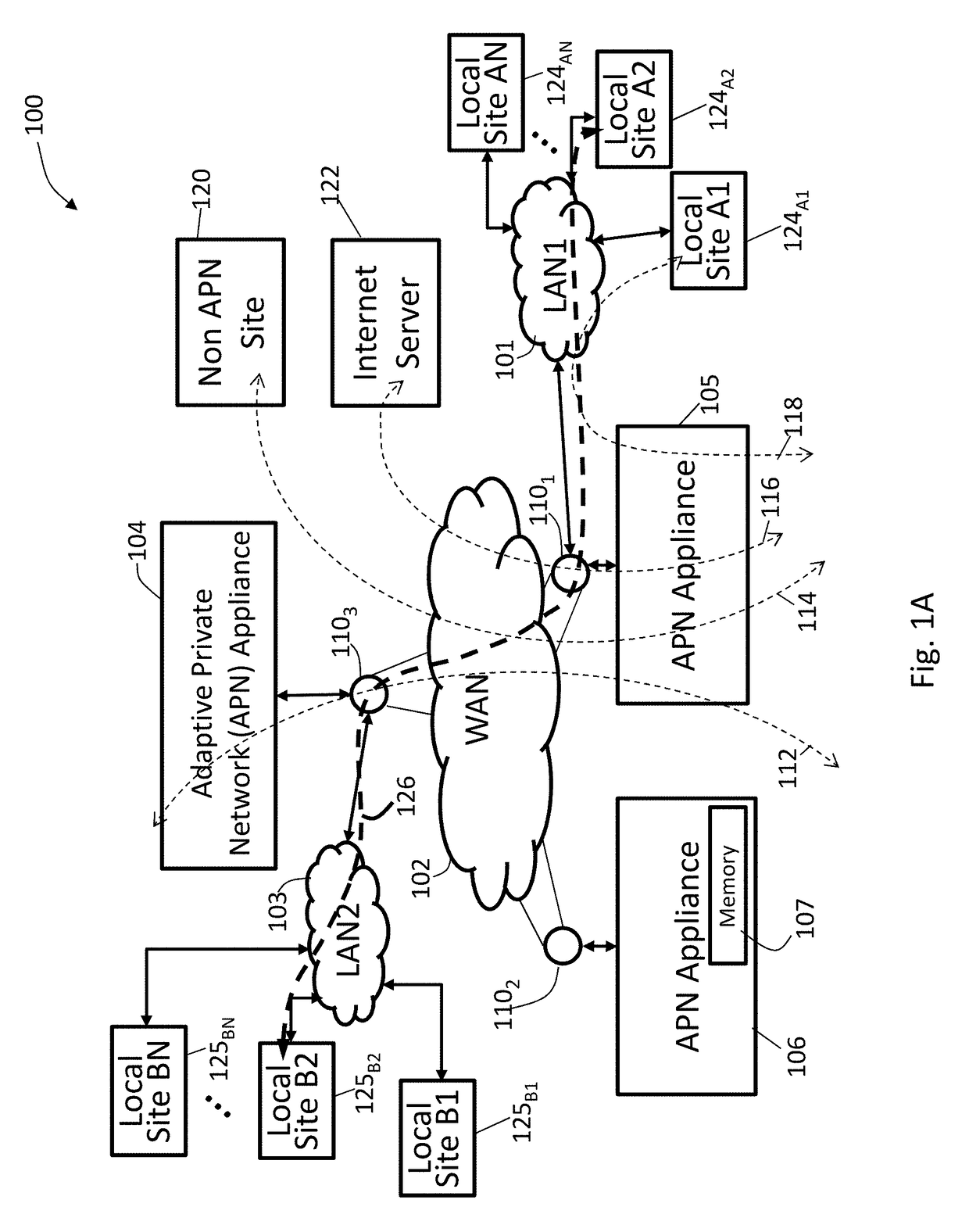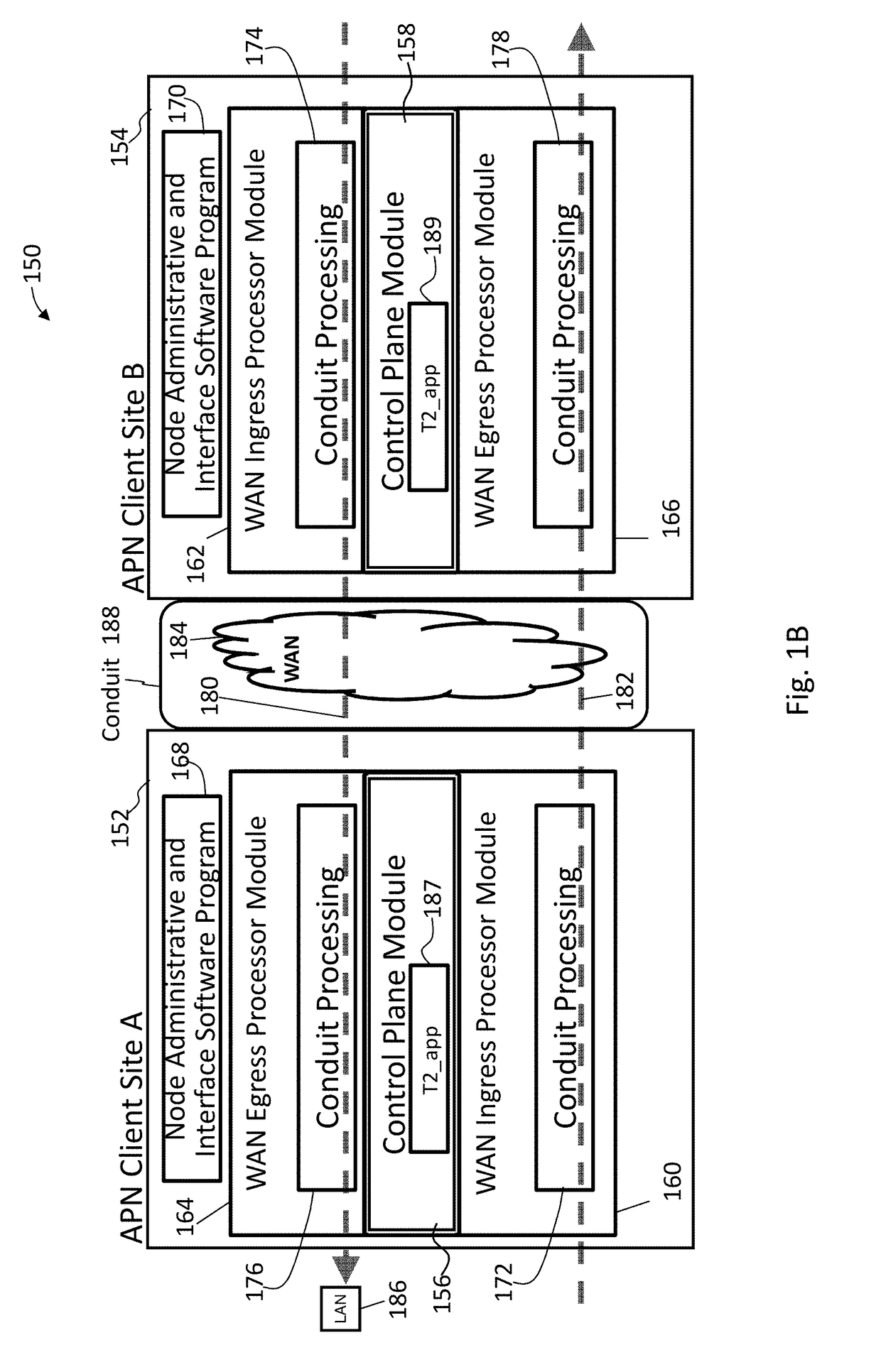Adaptive private network (APN) bandwith enhancements
a private network and enhancement technology, applied in the field of improved bandwidth tracking and adjustment, can solve the problems of ineffective and costly implementation of repeated static configuration of the network, inability to reconfigure the network normally, and inability to adapt to the network
- Summary
- Abstract
- Description
- Claims
- Application Information
AI Technical Summary
Benefits of technology
Problems solved by technology
Method used
Image
Examples
Embodiment Construction
[0030]FIG. 1A illustrates an exemplary adaptive private network (APN) 100 having local sites 124A1, 124A2, . . . 124AN, local sites 125B1, 125B2, . . . 125BN, on local area networks, LAN1 101 and LAN2 103, respectively, coupled to a wide area network (WAN) 102 under control of the APN showing service paths in accordance with an embodiment of the present invention. The APN 100 includes one or more wide area networks (WANs), such as WAN 102, APN appliances (APNAs) 104-106, WAN routers 1101-1103, and network application services as well as APN conduits between APNAs, as described in more detail below. The APN is configured from a single APNA acting as a network control node (NCN) that provides a single point of control for the APN. First, however, a number of terms used herein are defined with the meaning they have when used in the context of the present invention.
[0031]An APN path, also referred to as a regular path, is a logical connection established between two WAN links located at...
PUM
 Login to View More
Login to View More Abstract
Description
Claims
Application Information
 Login to View More
Login to View More - R&D
- Intellectual Property
- Life Sciences
- Materials
- Tech Scout
- Unparalleled Data Quality
- Higher Quality Content
- 60% Fewer Hallucinations
Browse by: Latest US Patents, China's latest patents, Technical Efficacy Thesaurus, Application Domain, Technology Topic, Popular Technical Reports.
© 2025 PatSnap. All rights reserved.Legal|Privacy policy|Modern Slavery Act Transparency Statement|Sitemap|About US| Contact US: help@patsnap.com



